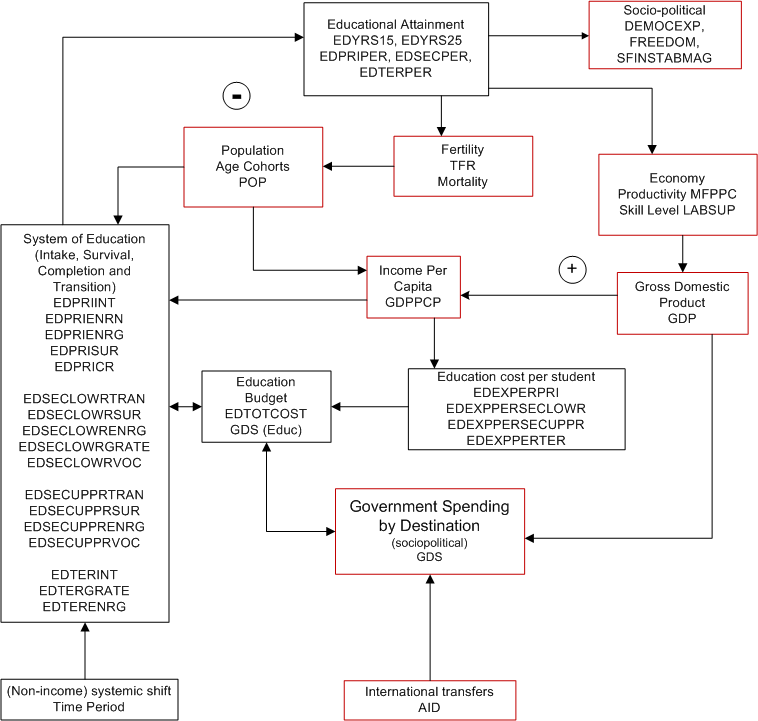International Futures Help System
Education Flow Charts
Overview
For each country, the IFs education model represents a multilevel formal education system that starts at primary and ends at tertiary. Student flows, i.e., entry into and progression through the system are determined by forecasts on intake and persistence (or survival) rates superimposed on the population of the corresponding age cohorts obtained from IFs population forecasts. Students at all levels are disaggregated by gender. Secondary education is further divided into lower and upper secondary, and then further into general and vocational according to the curricula that are followed.
The model represents the dynamics in education financing through per student costs for each level of education and a total public spending in education. Policy levers are available for changing both spending and cost.
School completion (or dropout) in the education model is carried forward as the educational attainment of the overall population. As a result, the education model forecasts population structures by age, sex, and attained education, i.e., years and levels of completed education.
The major agents represented in the education system of the model are households,—represented by the parents who decide which of their boys and girls will go to school—and governments that direct resources into and across the educational system. The major flows within the model are student and budgetary, while the major stock is that of educational attainment embedded in a population. Other than the budgetary variables, all the flows and stocks are gender disaggregated.
The education model has forward and backward linkages with other parts of the IFs model. During each year of simulation, the IFs cohort-specific demographic model provides the school age population to the education model. In turn, the education model feeds its calculations of education attainment to the population model’s determination of women’s fertility. Similarly, the broader economic and socio-political systems provide funding for education, and levels of educational attainment affect economic productivity and growth, and therefore also education spending.
The figure below shows the major variables and components that directly determine education demand, supply, and flows in the IFs system. The diagram attempts to emphasize on the inter-connectedness of the education model components and their relationship to the broader human development system.

For more, please click on the links below.
 International Futures at the Pardee Center
International Futures at the Pardee Center